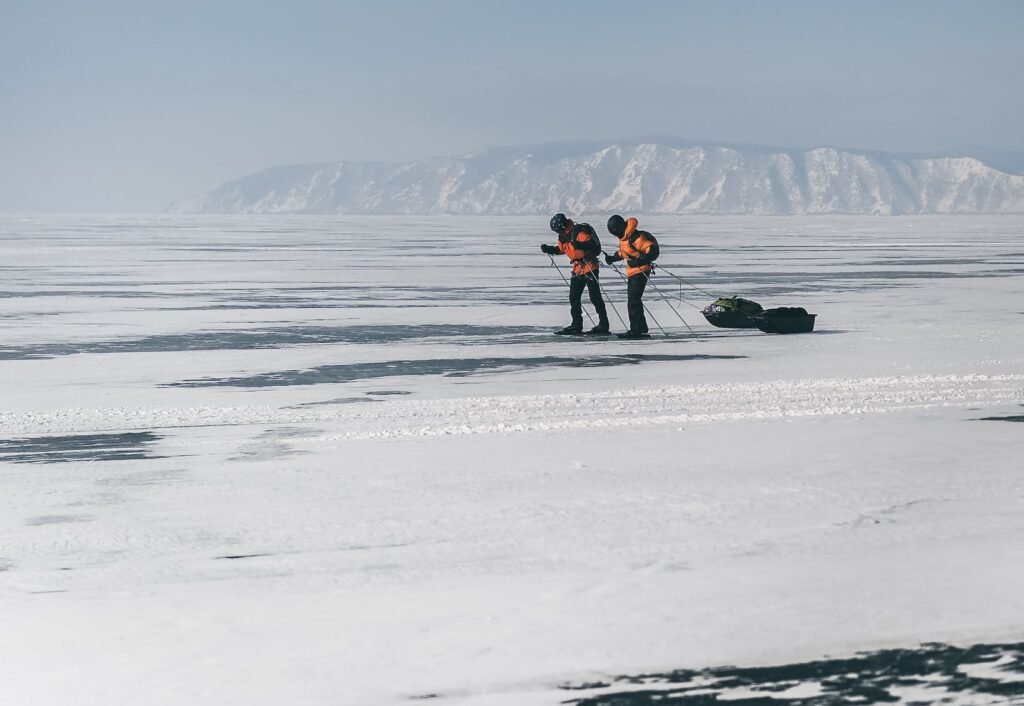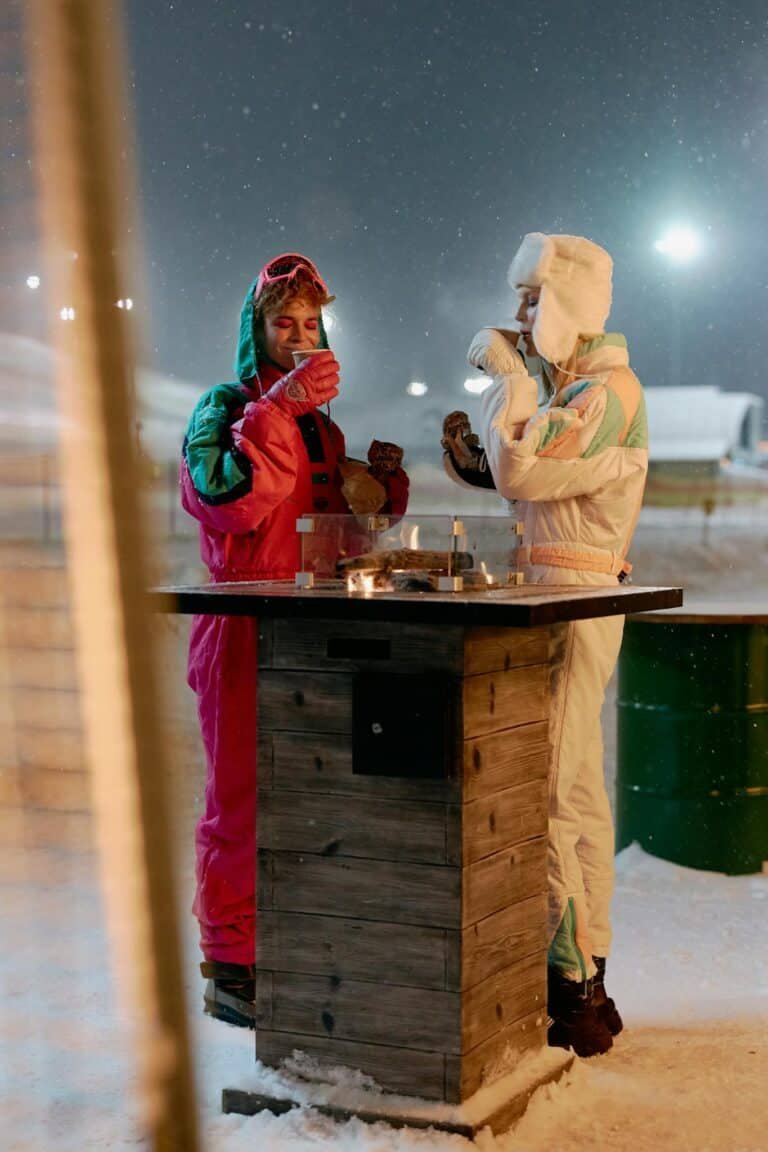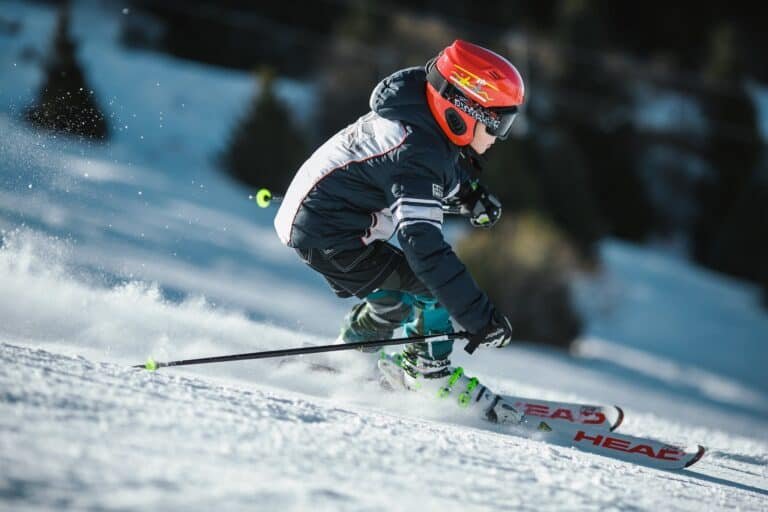How To Ski On Snow and Icy Conditions: Essential Tips and Guide

If you’ve ever gazed out at a snow-covered slope and wondered, “Can I ski while it’s snowing?”, you’re in for some good news. The answer is a resounding yes! Skiing in snowy conditions isn’t just possible; it’s an experience that can transform your perception of the sport, adding a magical dimension to your adventure on the slopes.
But let’s not glide over the challenges. While the new snow adds a touch of enchantment, it also brings its own set of demands, especially in terms of visibility and the physical effort required. Skiing on icy slopes, on the other hand, calls for a certain finesse and understanding of the terrain.
In this guide, we’ll journey through the essential aspects of skiing in fresh powder and icy conditions. From gearing up with the right attire to mastering the art of navigating through reduced visibility, we’ve got you covered.
Whether you’re a beginner feeling the first flutter of excitement or an experienced skier looking for deeper insights, this article will help you embrace and enjoy the snowfalls on the mountains. So, let’s buckle up our boots, adjust our goggles, and dive into the snowy world of skiing!
Key Takeaways
Challenges of Skiing In Fresh Snow

Imagine the scene: delicate snowflakes drifting down from the sky, blanketing the slopes in a soft, pristine layer of fresh powder. This is skiing during light snowfall – an experience akin to gliding through a living snow globe. The fresh powder creates a serene, almost surreal landscape, transforming each run into a unique adventure.
Skiing in either heavy snow or light snow brings its own set of challenges. The first hurdle is visibility. As the snow intensifies, it can feel like skiing inside a cloud. Landmarks blur, and the distinction between the sky and the slope becomes ambiguous, making navigation more challenging. This is where your skills and instincts as a skier are truly tested.
Another aspect to consider is the physical demand. Skiing in fresh snow, especially if it’s deep powder, requires more effort than gliding on a groomed trail. Your legs work harder to maneuver through the snow, and maintaining balance becomes a more intricate task. It’s a full-body workout that tests your stamina and strength.
Yet, for those who are prepared to embrace these challenges, skiing in snow is more than just a sport. It’s an exploration of your capabilities against a backdrop of extraordinary natural beauty.
Preparation and Gear for Skiing in Snow

Heading out to ski on a snowy day? Let’s talk about what to wear and what to bring. It’s all about layering your clothes and having the right gear, especially when facing freezing temperatures.
Start with a good base layer—think thermal underwear that keeps you warm but not sweaty. Then, add a middle layer, like a fleece or sweater, for extra warmth. Your outer layer, your ski jacket, and your pants should be waterproof and windproof to keep you dry and block out the cold wind.
But what if you get wet? That’s where having backup gear comes in handy. Pack an extra hat and gloves in case yours gets soaked. Wet clothes get cold fast, and that’s no fun on the slopes.
Visibility can be tricky when it’s snowing. That’s where ski goggles come in. Choose goggles with lenses that work well in low light, like yellow or rose-colored ones. They help you see bumps and dips in the snow better.
Don’t forget about protecting your face. A balaclava or ski mask can save your face from the cold and keep you comfortable.
And, most importantly, wear a helmet. It’s not just for safety; it keeps your head warm too.
Navigating Visibility Challenges

In snowy conditions, skiing can feel like navigating a whole new world, especially when you’re dealing with flat light or whiteouts. Here are some tips to help you see better and ski safely in these tricky conditions.
Dealing with Flat Light and Whiteouts: Flat light occurs when it’s overcast, and the snow-covered ground blends with the grey sky, making it hard to see bumps or dips in the terrain. In whiteouts, snow and clouds merge, reducing visibility drastically. Here’s what you can do:
Stay Below the Tree Line: When you can’t see much, skiing near trees can help. Trees provide contrast against the snow, helping you gauge the terrain and feel less disoriented. Plus, they offer some shelter from the snow and wind.
Choosing the Right Goggle Lens:
Lens Color Matters: In low visibility, the color of your goggle lens can make a big difference. Yellow, amber, or rose tints are great for flat light as they enhance contrast and help you see the contours of the snow.
Interchangeable Lenses: Some goggles come with lenses that you can swap out depending on the light conditions. It’s a good idea to have a few options handy.
Skiing Without Goggles:
This is not ideal, but if you find yourself in a situation where your goggles are lost or damaged, you’ll need to rely more on your other senses. Slow down, feel the terrain through your skis, and be extra cautious. Remember, this should only be a last resort.
For a more detailed guide about this topic, read my article about skiing in poor visibility.
How To Ski On Ice: Technique and Caution

Skiing on icy slopes, a common challenge in downhill skiing, is a different game altogether. It requires a blend of skill, control, and respect for the slick conditions. Here’s how you can master the art of skiing on ice:
Controlled Movements and Balance:
Staying Centered: Keep your weight balanced over the middle of your skis. This helps in maintaining control and stability.
Small, Controlled Turns: Avoid large, sweeping turns. Instead, make smaller, more controlled movements. This gives you better control and helps maintain a steady rhythm.
Flex Your Ankles and Knees: Stay flexible. Bending your ankles and knees slightly helps in absorbing variations in the terrain and maintaining your balance.
Edge Control and Skid Management:
Use Your Edges: On ice, edges are your best friends. Learn to tilt your skis to engage the edges, which helps grip the ice.
Skidding vs. Carving: Sometimes, a gentle skid is safer than trying to carve a turn on ice. Skidding allows for controlled speed and direction change without the risk of slipping out from under you.
Smooth Transitions: Practice making smooth transitions from edge to edge. Abrupt changes can cause you to lose grip and balance.
The Necessity of Well-Maintained Skis:
Sharp Edges: This is crucial for icy conditions. Well-sharpened edges grip the ice better, giving you more control.
Regular Tuning: Consistently maintain your skis. A well-tuned ski responds better, making it easier to navigate icy slopes.
When transitioning from the soft fresh powder to hard snow conditions, your skiing technique needs to adapt. Hard snow, often found on well-traveled slopes or during colder temperatures, presents a slicker surface that demands precision and control.
This is where the concept of ‘skiing close’ comes into play. Keep your skis closer together for better balance and stability, which is particularly important on hard, icy slopes. This stance helps in maintaining control and stability as you navigate the firmer, slicker conditions
Safety Considerations In Snowy Conditions

Skiing in snowy and icy conditions can be exhilarating, but it’s crucial to prioritize safety to make you’ll have a fun skiing experience. Here are some essential safety considerations to keep in mind:
Slowing Down in Reduced Visibility:
Take It Easy: When it’s hard to see, slow down. Reduced visibility can hide bumps, icy patches, and other skiers. By skiing at a more controlled pace, you give yourself more time to react to unexpected obstacles.
Use Familiar Trails: Stick to slopes you know well. Familiarity with the terrain can be a big help when visibility is poor.
Recognizing and Responding to Dangerous Weather Conditions:
Stay Informed: Check the weather forecast before and during your ski day. Be aware of any warnings about blizzards or severe weather.
Blizzard Awareness: If you’re caught in a blizzard, it’s time to head indoors. Blizzards can disorient even the most experienced skiers and create hazardous conditions.
Know When to Call It a Day: If the weather turns bad, don’t push your limits. It’s better to end the day early than to risk an accident.
Websites like Snow Forecast and On The Snow are both good source of weather information.
Being Aware of Sudden Weather Changes:
Stay Alert: Mountain weather can change rapidly. What starts as a clear day can quickly turn into a snowstorm. Be prepared to adjust your plans.
Know the Mountain Safety Rules: Familiarize yourself with the mountain’s safety guidelines. This can include information on avalanche risks, closed areas, and other hazards.
Potential Hazards on the Mountain:
Avalanche Awareness: If you’re skiing in an area prone to avalanches, educate yourself on the signs and carry the right equipment, like a transceiver, shovel, and probe.
Stay on Marked Trails: Especially in poor visibility, it’s easy to stray off course. Stick to marked trails to avoid unexpected dangers.
Skiing safely means being prepared, staying informed, and making smart decisions based on the conditions. By keeping these safety considerations in mind, you can enjoy a thrilling day on the slopes while minimizing risks.
Tips and Tricks for Enhanced Experience

Skiing in snow and ice can be a blast with a few insider tips up your sleeve. Here are some tricks to enhance your skiing experience, along with a sprinkle of personal anecdotes for that extra relatable touch.
1. Choosing Mittens Over Gloves:
Extra Warmth: On those particularly chilly days, opt for mittens instead of gloves. They keep your fingers together, generating more warmth. I remember a day so cold that even my breath seemed to freeze, but my hands stayed toasty warm in a pair of fluffy mittens.
2. Skiing Below the Tree Line:
Better Protection and Visual Cues: Trees can be your allies in snowy conditions. They break the wind, improve visibility, and give you a sense of depth and perspective on the slope. Skiing through a forested trail during a light snowfall is like weaving through a magical winter tapestry.
3. Keeping an Eye Out for Trail Markers:
Stay Oriented: In reduced visibility, trail markers are crucial for keeping you on the right path. I recall a time when a sudden fog descended, and those little markers were like lighthouses guiding me safely back to the base.
4. Personal Experiences and Anecdotes:
Learning From Mistakes: Every skier has their share of stories. Like the time I underestimated the importance of proper goggle lenses and found myself squinting through a snowy blur – lesson learned!
Shared Experiences: Chatting with fellow skiers on the lifts often brings out gems of advice. I once got a tip about a hidden slope from a local that turned out to be the highlight of my trip.
Conclusion
As we reach the end of our snowy and icy journey, it’s clear that skiing in these conditions is more than just a physical activity; it’s an exhilarating experience that connects us with the raw beauty of nature. Whether it’s the serene tranquility of a light snowfall or the adrenaline rush of navigating icy slopes, skiing offers a unique adventure each time you hit the slopes.
Remember, the key to a fulfilling downhill ski experience lies in preparation, awareness, and a willingness to embrace the challenges. With the right gear, a cautious approach to visibility, and respect for the mountain’s ever-changing conditions, you can transform potential obstacles into opportunities for memorable runs.
Every ski trip is a story in the making. From the quiet whisper of skis on fresh snow to the crisp scrape of edges on ice, each turn, each moment is a chance to create lasting memories. So, gear up, stay safe, and embrace the magic and challenges of downhill skiing. Here’s to finding joy in every snowflake and thrill in every descent. Happy skiing!






